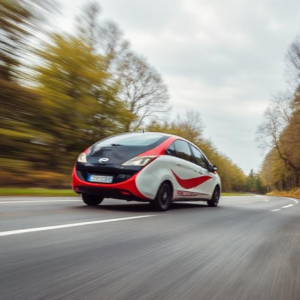What is Drift Velocity?
Drift velocity is the average speed at which charged particles (like electrons) move through a conductor, like a wire, when an electric current flows through it.

In simple terms, it’s the speed at which the electrons “drift” through the wire because of the electric field created by the battery or power source.
How does it work?
Imagine a wire with many electrons moving randomly in all directions. If you were to look at these electrons, you’d see them bouncing around, like tiny balls in a chaotic game. However, when you apply an electric field (by connecting the wire to a battery), it causes a small, steady movement of these electrons in a particular direction. This movement is what we call drift velocity.
- The electric field pushes the electrons in a particular direction.
- Due to collisions with the atoms in the wire, the electrons don’t move in a straight line—they are constantly bouncing around, but the electric field gives them an overall direction of movement.
- As a result, the electrons have a slow, steady drift in the direction of the electric field.
Drift Velocity Formula
The drift velocity (v_d) can be calculated using the formula:
Where:
- I = Electric current (in amperes, A)
- n = Number of free electrons per unit volume (depends on the material)
- A = Cross-sectional area of the wire (in square meters, m²)
- e = Charge of an electron (approximately
coulombs)
Key Points:
- Slow movement: The drift velocity is actually very small, much slower than how fast the electrons are moving randomly. For example, in a typical copper wire, the drift velocity is usually just a few millimeters per second!
- Current: The electric current is related to the total number of electrons flowing per second, but the drift velocity gives us the average speed of a single electron. Even though the electrons move very slowly on their own, the total current can still be quite large because there are so many electrons in motion.
Drift Velocity vs Random Motion
- Random motion: Without an electric field, electrons move randomly in all directions, so there’s no overall movement in any one direction.
- With electric field: When an electric field is applied (from a battery or power supply), it causes the electrons to have a small, uniform drift in the direction of the field, which results in the electric current.
Example in Simple Terms
Imagine a crowded room full of people (representing electrons), and everyone is moving around randomly, bumping into each other. This is how the electrons move without an electric field. Now, imagine that someone shouts and tells everyone to start moving in the same direction, but they still bump into each other occasionally. The overall movement in one direction is like the drift velocity—the people move slowly toward the door (representing the electric field), but they keep bumping into each other (collisions with atoms).
Why is Drift Velocity Important?
- Electric current: Drift velocity is a key factor in understanding how electric current works, as it helps explain how the flow of electrons creates the current.
- Electrical conductivity: The drift velocity depends on the material’s properties (like the number of free electrons and how easily they can move). Different materials (like copper, aluminum, or rubber) will have different drift velocities.
Summary:
- Drift velocity is the slow, steady speed of electrons moving through a conductor when an electric current is applied.
- It happens because of the electric field created by a power source like a battery.
- Even though electrons are constantly moving randomly, the drift velocity gives us the overall direction of movement.
- It is very small compared to the random motion of electrons but is still important in understanding electric currents.











